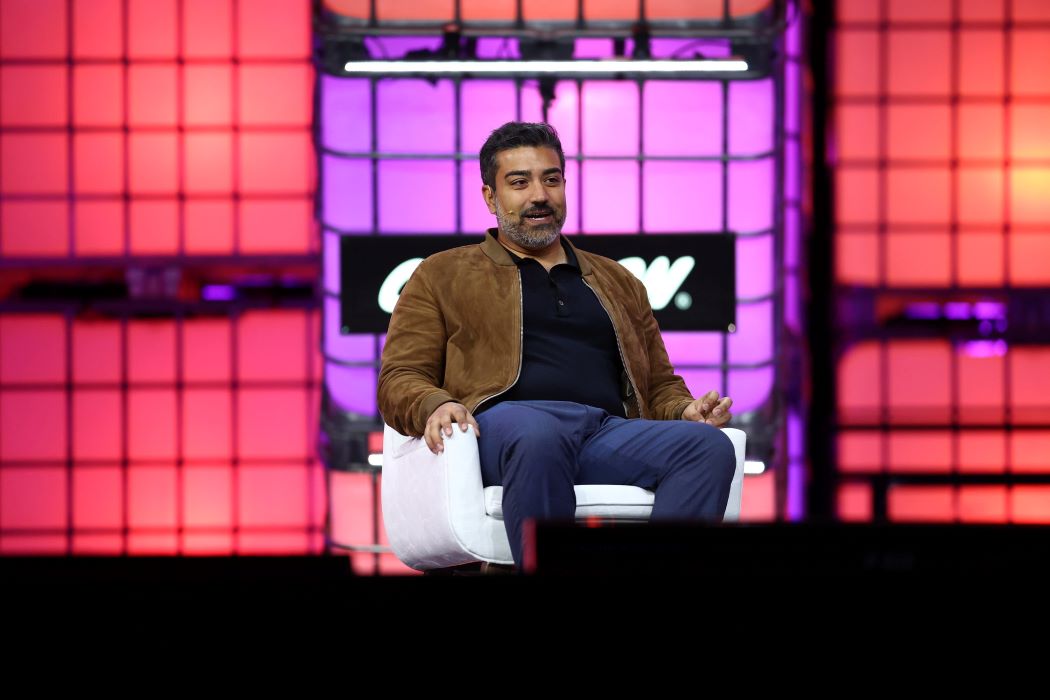
‘The Blue Caftan’ Review: A Closeted Tailor Confronts His Feelings in This Understated Moroccan Drama
It’s no secret that Morocco is one of the most homophobic places on earth, punishing certain acts with prison sentences of up to three years. The secret, as far as Maryam Touzani’s “The Blue Caftan” is concerned, is that its main character is homosexual. The man, Halim (Salem Bakri), is devoted to both his religion and his wife, Mina (“Incendies” star Lubna Azabal). Together they own an old-fashioned garment shop in the town’s medina, where such stories almost certainly exist. Still, it takes equal measures of audacity and sensitivity to portray them on screen, especially from a woman’s point of view.
Halim works as a maalem, or master tailor, struggling to keep the trade alive. These days, machines accomplish the work that artisans like Halim once did by hand, and apprentices are hard to find. Much of the film is dedicated to this disappearing craft: Touzani (“Adam”) admires the care with which Halim sews the embroidery to the hem of a caftan, featuring shots of characters preparing the thread, testing the fabrics and so on. These sensual details evoke the sensation of touch, taking the place of the more explicit scenes found in so many LGBT-themed art-house movies. While “The Blue Caftan” is hardly chaste, it’s tastefully restrained — too much so at times, to the extent that the slow and understated movie overstays its welcome by almost half an hour.
Audiences are meant to identify with Halim, who has been forced to repress his true identity all these years. But the film’s most empathetic character is arguably the wife, whom Azabal imbues with more layers than the screenplay suggests. Thus, we think of her feelings even in scenes when Mina remains off-screen — as when Halim slinks away to the local hammam, where he’s found a discreet way to have anonymous sex with other men. There’s little satisfaction in these trysts, which take place behind closed doors (we see two pairs of feet positioning themselves below the wall of a private stall, and our imaginations fill in the rest). But Halim silently hopes for more when a fair-featured young man named Youssef (Ayoub Missioui) expresses an interest in learning the trade.
Mina picks up on the threat almost immediately, catching her husband staring discreetly — but not nearly discreetly enough — at Youssef’s bare torso as the apprentice changes clothes across the workshop. How much does she understand about Halim’s true nature? That question floats beneath the surface of the movie, unanswered till nearly the end, when Halim has an important conversation with his dying wife. The man seldom opens his mouth, though his eyes speak for him.
Audiences don’t realize it immediately, but Mina has been waging a quiet war against breast cancer. “The Blue Caftan” is set at a turning point in their marriage. Mina has stopped fighting the disease, but she has not stopped loving her husband. Moments of shared laughter and affection between them make clear that the feeling is mutual, even if their bed has gone cold. The movie represents a turning point in their marriage, where anything could happen: Halim could be found out, and the couple shamed. Mina could fire Youssef and spoil this rare chance at her husband’s happiness. Or there could be a kind of tender understanding between them, whereby the chapter husband and wife shared comes to a close, and Mina gives her blessing before dying.
There is also the matter of the eponymous caftan, which a client has commissioned from Halim for a special occasion. An ankle-length tunic made of petroleum blue silk, embellished with ornate gold trim, it appears to be the most beautiful garment Halim has ever made. But this time, he isn’t working alone. Touzani showcases practically every step of its creation, using the process as a kind of slow-motion seduction between Halim and Youssef. The master guides his student’s hands as they cut the fabric, and demonstrates the hand-stitched technique used to accent the hem.
The woman who ordered the caftan stops by every few days to check on its progress, but Mina doesn’t like her attitude and asks her husband not to give such fine work to someone so callous. The job takes weeks and would earn them a fine sum, but Touzani has introduced the caftan as a symbol, and its touching to see how the film uses it in the end. Just because Mina accepts her husband’s homosexuality doesn’t mean society will, of course, and there’s a kind of wishful thinking to the movie’s politics. Consider the paradox of the maalem’s trade: As Morocco modernizes, Halim’s field seems increasingly outdated. But so long as the country remains conservative on aspects of homosexuality, he cannot love whom he wants. “The Blue Caftan” dares to imagine a world where there’s room for both.










































![iFi's GO Bar Kensei Dongle DAC Supports K2HD Technology With Some Samurai Swagger [Updated] iFi's GO Bar Kensei Dongle DAC Supports K2HD Technology With Some Samurai Swagger [Updated]](https://i0.wp.com/cdn.ecoustics.com/db0/wblob/17BA35E873D594/33FF/45A11/QTXOLJR4xDKSNMMk2WlTgjaIlvSgcYpeU1xJzUwIoYs/ifi-go-bar-kensei.jpg?w=768&ssl=1)































